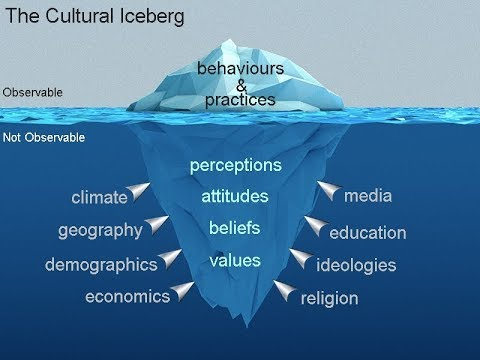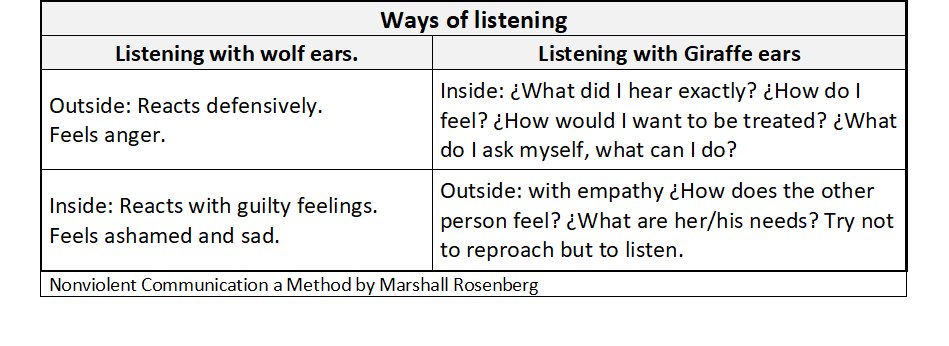Communication the Pavement to Build Peace
Author: Diana Chávez Acosta
Conflicts between individuals or groups arise from miscommunication, the way we express things are usually more influential than what we are actually saying. Imagine all the conflicts and inconveniences we could avoid by first expressing ourselves correctly and most of all listening and understanding the others point of view.
There are two types of Communication:
- Violent communication based on moralistic judgments, evaluations, criticisms, demands, coercion, labels: right vs wrong and
- Nonviolent communication based on what the person thinks, listens and speaks in ways that awake compassion with ourselves and the others.
The problem is that what we see and perceived from another person is only the tip of the iceberg and the core part of any human being is hidden from plain sight, all of the elements that make us wonderful and complex individuals are concealed in the deeper layers. There is an important metaphor usually used to illustrate that our experiences are deeply influenced by dynamics we cannot easily see: the structures that form the framework within which we operate, and the beliefs we hold about how things work, this world of assumptions, habits, beliefs that may not be consciously articulated or taught but can seriously influence our behavior.

Adapted from The Systems Thinking Playbook: Booth Sweeny L. and Meadows D. 2010
But how do we overcome our selfishness and evolve into more emphatic creatures?
According to the Marshall Rosenberg method we need certain pre conditions for non-violent communications: first and foremost, the idea that human beings are good, to believe always in the good intentions of the other behind each action, everyone can learn and discover their needs and feelings, everyone is happy by helping other people and everyone wants the other to feel empathy for him/her.
The main objectives of this practice are: to understand and be understood, find together solutions that consider all the needs and expressing how I am without blaming, criticizing or demanding with the extended goal of applying this to any problem solving whereas its regarding personal issues or more broad interactions.
As mentioned before the use of empathy is vital for this type of communication this method implies 3 important elements: 1) Self-empathy involves compassionately connecting with what is going on inside us. 2) Receiving empathically implies “emptying the mind and listening with our whole being”. 3) Expressing honestly without intended omissions.
Patience is a virtue, bur learning to listen is an art, the Marshall Rosenberg method explains the importance of listening and the different ways of listening:

Table on the ways of listening. From Nonviolent Communication a Method by Marshall Rosenberg

In this stage however, we must be careful with the pseudo feelings which are not feelings at all but words that express a thought. More like an opinion: my evaluation of someone else’s behavior for example, these put the responsibility of your feelings on the other person which can make the final objective unreachable.
Finding common ground is never easy not in our homes regarding family interactions much less with estrangers that we don’t feel a caring bond with, but communication is certainly a powerful toll for problem solving and building peace.
Biografía del autor
Diana Chávez Acosta, Postgraduate and Master in Foreign Affairs currently working in the private sector for the Canadian Company RocketRez. Has many years of experience working in Projects some regarding Governmental Institutions such as the Ministry of Education- General Coordination of School Administration as Operations Analyst, the Ministry Coordinator of Social Development as Planning and Public Investment Specialist, the General Directorate of Civil Registry, Identification and Certification as Monitoring Analyst for Programs and Project Plans. And others linked to NGO’s like the UNPD Program in Ecuador: Programa de Alimentación Escolar / School Feeding Program as Logistics coordinator and in the Canadian NGO Accreditation Canada/HSO as Project Officer.
Diana received her Bachelor in Economic and Administrative Sciences with mention in International Commerce from Universidad de las Américas in Ecuador and her Postgraduate and Master’s degrees in International Relations from Facultad Latinoamericana de Ciencias Sociales, FLACSO – Ecuador. Her master’s thesis “Ecuador en Relación a La Reforma del Consejo de Seguridad de la ONU. Posición del Ecuador frente a la reforma de la ONU was published by Dictus Publishing.



